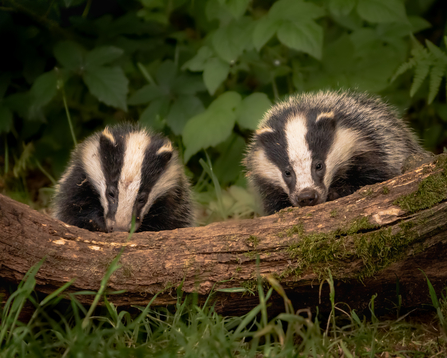It is a Thursday evening, the sun is setting and I am hiding, peaking over the other side of a fence into the overgrown woodland. To an outsider I would no doubt look like a mad woman, standing there motionless for over an hour, hyperaware of any rustling of the branches, and trying not to make a noise myself. I know they are awake, every now and then I can hear the telltale squeaking coming from their sett. For four months, I had returned to this spot every week to set up my camera traps and from this, I had learnt their patterns. How at around 6pm each day the camera traps would capture a black and white streak peaking its way cautiously into the oncoming darkness. A badger. One of Britain’s most iconic mammals and our largest land predator.
I had never fully appreciated these mysterious creatures before, but quickly became incredibly fond of them as I witnessed their ever-secret world. Using my cameras, I began to recognise differences between the individual badgers of the group – the broader faced, larger males and the slender nose females with hair-torn thinner necks. I learnt their behaviours, and what may seem a simple task such as changing bedding suddenly became fascinating. You see, they are quite clean animals. So a few times a year, such as before cubs arrive, they tend to completely replace their bedding. They will also regularly place it outside their sett to freshen up for reuse. This appears to be an arduous task, but with wildlife, they do not tend to waste their all-important energy on an activity unless it comes with a big payoff. In this case, we believe this behaviour reduces the build-up of irritating parasites like ticks and fleas. I would watch, as they would gather up a pile of fallen leaves with their forepaws and then scoot backwards dragging it into their sett; this is something badgers will do for up to 100 metres! I saw them build up their social bonds through scent marking and grooming each other. One of my favourite sights was watching the large male lay on his back grooming himself diligently and scratching his tummy. It was not until one momentous occasion, in spring, that I first managed to capture three adorable little badger cubs on camera following clumsily behind their mum. You see, badgers will mate throughout the year but due to a remarkable phenomenon, known as delayed implantation, their bodies are able to delay the pregnancy from progressing so that cubs are not born until around January through to March. After which, they stay underground until they are about 8 weeks old, so I had been patiently waiting for the day they would hopefully come to the surface, and it was completely worth it.


